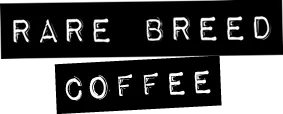A&E Coffee & Tea Environmental Initiatives
April is Earth Day month. Back in 1970, Earth Day was established by Gaylor Nelson, a senator from Wisconsin. It was such a successful movement, that in December of the same year, congress created the Environmental Protection Agency (EPA).
At its heart, Earth Day carries the commitment to doing what you can where you are. Yes, it has national recognition, but it still takes individuals to make a difference. This begs the question, what are we doing to embrace the ideals of environmental stewardship?
Our commitment to the land
We have always been committed to offering certified organic coffee and tea. It’s not just a fad, we have been certified organic for more than 20 years. We are well aware that coffee and tea are not grown in the continental USA, but regardless of where they’re grown, supporting organic agriculture is important to the sustainability of our planet as a whole. We feel the global impact of climate change, which is a worldwide problem. By supporting organic agriculture, we are helping the growers invest in long term sustainability measures. These include shade grown coffee, which protects water run off and prevents mudslides. Organic fertilizer helps with soil structure, improve water movements, and encourage beneficial microbes. Both coffee and tea are hand-picked. So, reducing the amount of pesticides on the fruit and leaves protects the pickers from contact transfer.
Reduce, Reuse, Recycle
The three R’s are an important part of our environmental Initiative. The order matters too. First of all, we want to reduce the volume of waste, whether it is recyclable or not. It takes energy to make stuff, so we try to reduce the use of disposable things we use. Practically speaking, we use tote bags to deliver orders, reducing the number of boxes. We also use high efficiency lights and turn them off when we are not using them. Programmable thermostats come in handy to use less electricity when we’re not in the building. Consolidating orders and ordering less frequently reduces the amount of transportation fuel and packaging material. For our coffee sampling or tasting, we use glass or ceramic instead of paper. None of these are big steps that by themselves will make a noticeable difference. But year over year, they add up. Reducing the volume of disposable things is an overlooked step, but is one of the most important.
Reuse is probably one of the most fun. We love finding ways to reuse things around the warehouse and cafe. We have partnered with Grow Nashua, a local non-profit inner city agriculture program. They use our coffee chaff for their raised beds, and burlap bags to line paths. We give our burlap bags away. Customers make all sorts of interesting things out of them, such as tote bags, upholstery, wrapping shrubs to protect them during the winter, and the most fun, sack races. We reuse packing material for shipments and five pound bags for our own cafe orders. We even use the grainpro bags as trash liners.
Finally, recycling is the lowest R on the totem pole. We certainly recycle all that can be recycled: paper, plastic and metal. Paper is the biggest contributor to our recycling bin, along with cardboard. If you have any suggestions on how to reduce the amount of paper, we are all ears.
Going forward, we are working on some new packaging ideas that fall into the reduce, reuse and recycle mentality. Getting another life cycle out of an item makes us happy.
Share with us some of the ways you reincarnate your coffee and tea? Maybe it’s adding it to compost, using the tin tie in a craft project, or turning a tea tin into a pencil holder.

